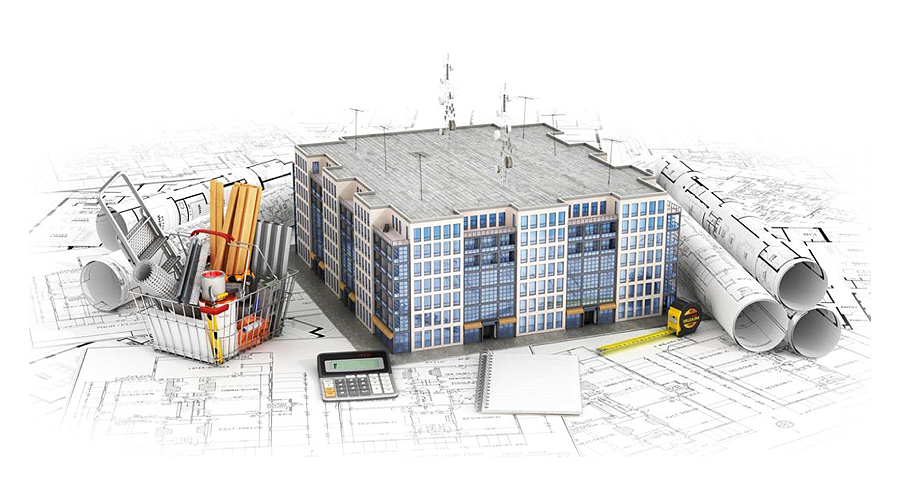
BIM (Building Information Modeling) serves as an extensive digital representation of a project’s physical and functional components, facilitating informed decision-making throughout its lifecycle. Through BIM modeling services, users can access a 3D model, rectify design flaws, and generate practical schedules. With the global BIM market projected to reach $15.0 billion by 2028 at a 13.7% CAGR, key BIM industry trends 2024 like IoT-AI integration, cloud-based collaboration, prefabrication leveraging, and digital twins are revolutionizing the construction landscape.
The article dives into how are BIM Industry Trends 2024 emerging, such as improved IoT-AI integration, cloud-based platforms, modular construction applications, and digital twin asset management. Let’s read.
1. Improved Integration with IoT and AI
The convergence of Building Information Modeling (BIM), Internet of Things (IoT), Artificial Intelligence (AI), and Digital Twins are revolutionizing the construction industry. BIM provides an extensive digital representation of a project, while IoT sensors and connected devices collect real-time data on asset performance, enabling Digital Twins to visualize the status and working conditions of physical assets virtually.
- IoT Sensors and Tracking Systems: IoT sensors track equipment usage, worker safety, inventory management, and resource allocation, improving efficiency and project management.
- Digital Twins and Real-Time Data Integration: Digital Twins elevate BIM models by visualizing the status, working conditions, and location of physical assets in real-time, updated with data from IoT sensors and connected devices.
- AI-Powered Optimization and Decision-Making: AI algorithms analyze large datasets, automate repetitive tasks, enhance design optimization, and support data-driven decision-making when integrated with BIM and Digital Twins.
This integration of BIM, IoT, AI, and Digital Twins offers a comprehensive approach to asset management and maintenance, enabling informed, proactive decision-making throughout the project lifecycle.
2. Cloud-Based BIM Collaboration
Cloud-based BIM platforms are revolutionizing collaboration in the AEC industry by enabling real-time access and updates to project information from anywhere. This shift towards collaborative workflows fosters seamless exchange of data across different software platforms, reducing coordination errors and enhancing overall project efficiency.
- Open BIM Standards: The adoption of open BIM standards, such as OpenBIM, facilitates interoperability and communication between diverse software platforms, breaking down data silos and fostering better collaboration.
- Outsourcing BIM Services: Outsourcing BIM Coordination Services to specialized providers ensures alignment with the latest interoperability standards and cloud-based collaboration capabilities, enhancing accessibility and flexibility for geographically dispersed teams.
- Cloud Platform Benefits: Cloud platforms offer increased scalability, real-time collaboration, and centralized access to project models, enabling seamless coordination among stakeholders, regardless of their location.
3. BIM for Prefabrication and Modular Construction
BIM plays a pivotal role in prefabrication and modular construction by facilitating the design, visualization, and fabrication of modular components. The integration of BIM with these methods leads to numerous benefits:
- BIM acts as a digital twin, enabling collaborative development of accurate 3D models of prefabricated components and modules, facilitating better coordination and visualization.
The integration of BIM Modeling Service with prefabrication and modular construction can significantly improve efficiency, quality, and cost-effectiveness in the construction industry. It enables streamlining design and planning, enabling clash detection and resolution, providing accurate quantity takeoffs, improving communication and collaboration, and enhancing overall efficiency and productivity.
4. Digital Twins for Asset Management
Digital twins, virtual replicas of physical assets created using BIM data, allow stakeholders to simulate and analyze various scenarios, predict performance outcomes, and optimize maintenance schedules. By integrating real-time data from IoT sensors and connected devices, digital twins provide a comprehensive view of a building’s performance, enabling proactive maintenance and optimizing energy use.
- Predictive Maintenance: The combination of data from BIM and digital twins allows the implementation of predictive maintenance strategies, enabling interventions before serious problems occur. By analyzing real-time data on asset performance, digital twins can identify potential issues and trigger maintenance activities, reducing downtime and extending the lifespan of assets.
- Space and Usage Optimization: With the ability to view the current usage of spaces and resources in real-time, asset managers can optimize the use of buildings and facilities. Digital twins can provide insights into occupancy patterns, energy consumption, and resource allocation, allowing for data-driven decisions to improve efficiency and reduce operational costs.
- Energy Management and Sustainability: Digital twins can integrate energy consumption and environmental performance data into the BIM model, allowing for more effective energy management and asset sustainability. This integration enables the identification of energy-saving opportunities, the implementation of energy-efficient strategies, and the monitoring of sustainability goals.
Both digital twins and BIM Modeling Service provide a solid foundation for data-driven decision-making throughout the asset lifecycle. The combination of these technologies represents a complementary approach to asset management and maintenance, achieving unprecedented levels of efficiency, sustainability, and performance.
Conclusion:
Hence, if you’re looking for any more information on Bim Modeling Services, we at BimOffis are here to help you. We’re here to assist you in all your BIM needs.

